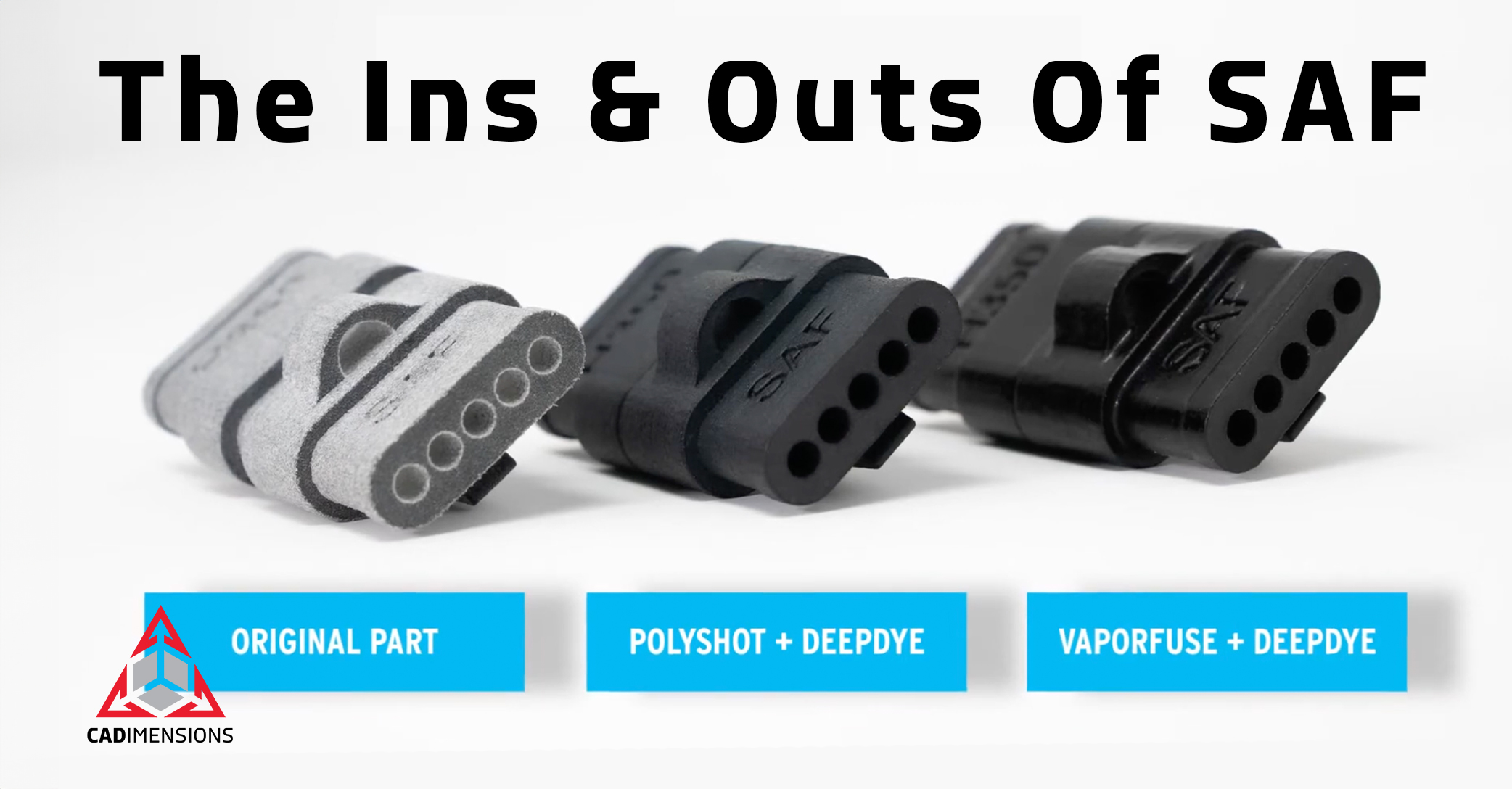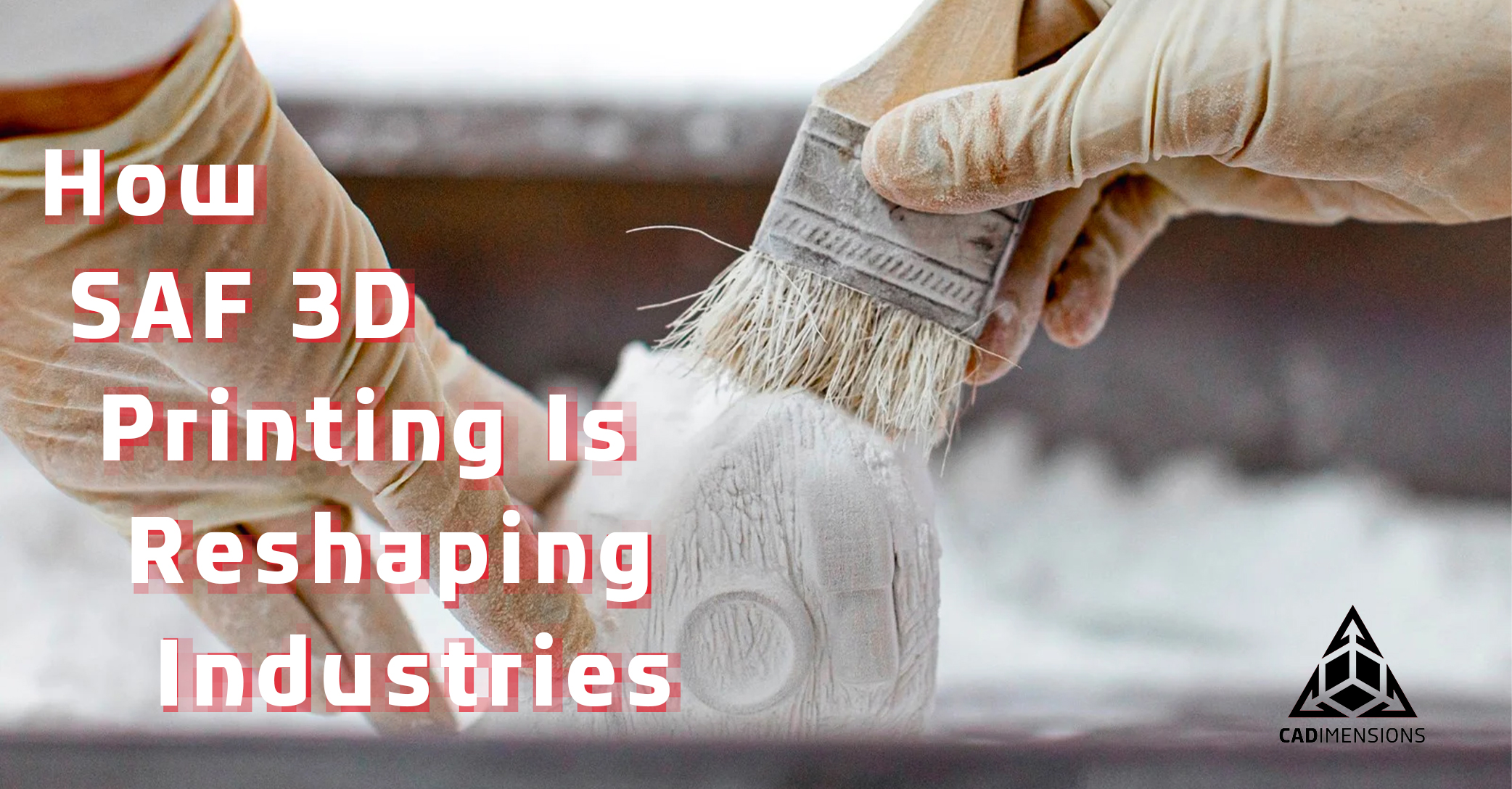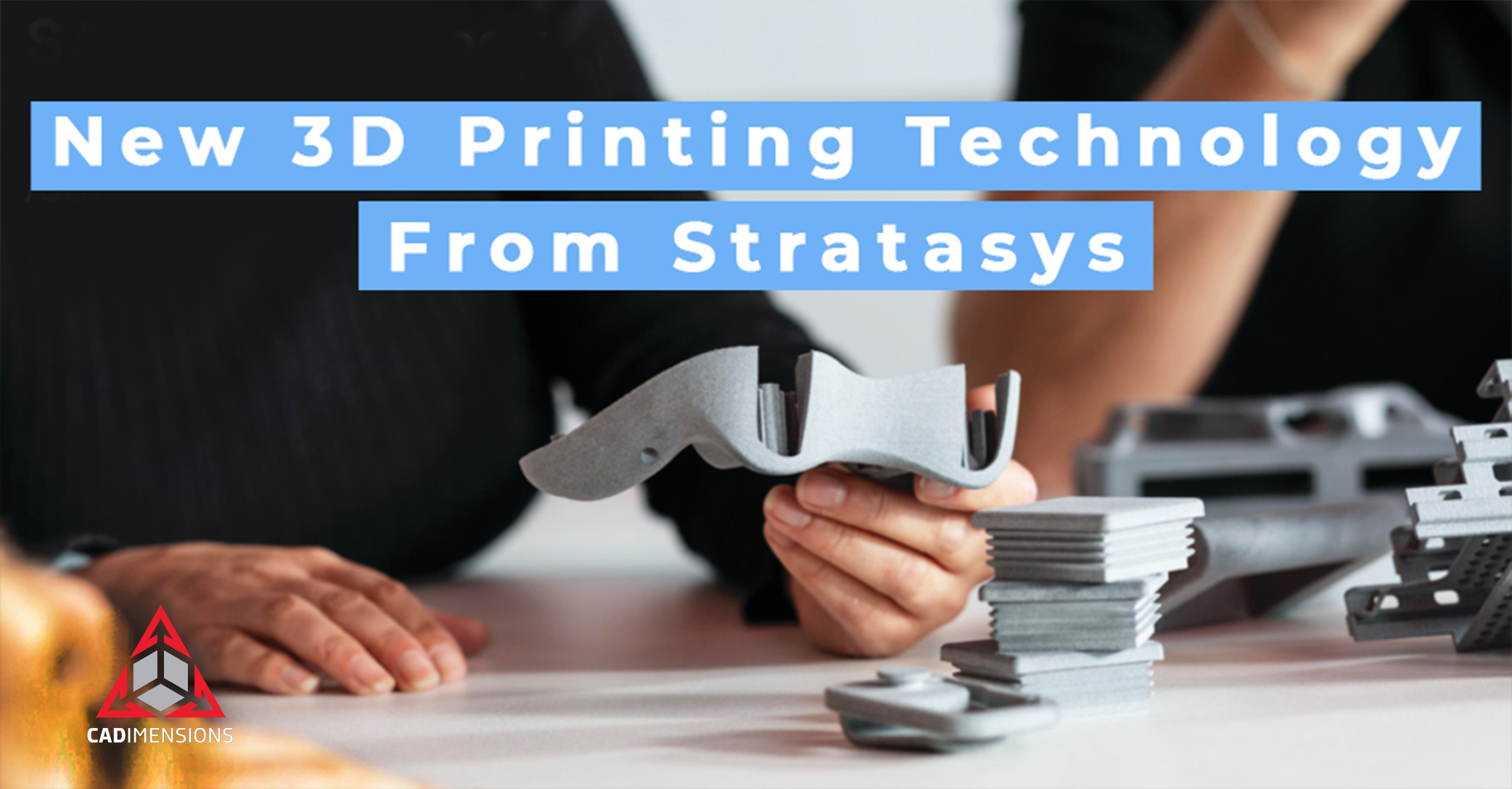Exploring the Fundamentals of SAF Technology
This blog will introduce the core elements of incorporating SAF (Selective Absorption Fusion) technology, with a focus on the Stratasys H350 machine. We'll cover essential factors crucial for a successful implementation journey, from understanding equipment requirements to navigating environmental considerations. We'll also touch on fundamental principles and best strategies for seamlessly integrating this advanced technology into your business operations.
Let’s Get Down To Basics
When bringing on robust equipment such as the H350 printer, supporting components like a powder breakout station, Voltage stabilizer, an air extraction unit and a bead blaster form the backbone of the setup. These machines fall under the category of "post-processing" and are available for individual purchase.
Ensuring ideal temperature and humidity conditions is also crucial. HVAC upgrades may be necessary to meet these requirements. A dedicated room with controlled conditions is recommended, optimizing SAF performance and minimizing equipment interference. This controlled environment enhances reliability and efficiency, resulting in the creation of superior manufactured parts.
Understanding the significance of material selection is also paramount, with options including PA11, PA12, and the upcoming PolyPropelene. Each material boasts distinct properties catering to diverse application needs, emphasizing the importance of selection aligned with intended use cases.

Design considerations for SAF shed light on the intricate details essential for achieving optimal part performance. We have an extensive design guide essential for those utilizing the H350 or designing parts for it, offering insights into geometric possibilities and factors influencing printing success.
Unlocking Best Practices
As part of the best practices for maximizing SAF efficiency and quality, attention to detail during the CAD modeling phase is critical. Considerations such as orientation are key not only for aesthetics but also for influencing mechanical properties, nesting density, and depowdering efficiency.
Quality control is also a notable element to SAF processing. Maintaining cleanliness in both the machine and work area is necessary as a pristine environment contributes to the machine’s superior printing results. Post-processing techniques then take center stage, offering avenues to refine printed parts. Cleaning via bead blasting is standard practice, with additional considerations for design and print orientation to facilitate powder removal. Techniques like shot peening further enhance surface smoothness, while dying solutions offer color customization possibilities.
Moreover, vapor smoothing introduces considerations for part orientation within the vapor chamber, prompting strategic design adjustments to accommodate post-processing requirements effectively.
These methods lay the groundwork for achieving optimal SAF printing outcomes, characterized by precision, quality, and efficiency.
The Stratasys H350 + NASCAR Next Gen Cars = The Creation of Successful End-Use Parts
Back in 2022, Stratasys launched a partnership with The National Association for Stock Car Auto Racing (NASCAR) to obtain tailored, high-performance production parts delivered within a matter of weeks. The H350 emerged as a transformative solution.
“As a mandatory part of every Next Gen car, the air ventilation unit needed to be accurate and repeatable, featuring the same weight, look, and dimensions for every car throughout the fleet. The H350’s SAF technology ensures high levels of accuracy, repeatability, and finishes.”
As parts were refined, utilization of post-processing techniques were tailored to meet NASCAR's requirements.
 Click here to read more about this case study.
Click here to read more about this case study.
This case study, along with a plethora of customer success stories, highlights the genuine potential of the H350. By offering customizable additive capabilities personalized to specific business needs, coupled with meticulous setup and effective utilization of post-processing methods, you're well-positioned to achieve unparalleled success!
And That’s It For Now!
Understanding the fundamental aspects and best practices of SAF technology is vital, encompassing operational mechanisms, material characteristics, and unique facility requirements. Engineers and manufacturers are encouraged to explore SAF opportunities, given its advantages like tool-less production, design flexibility, and efficient part production. SAF also offers a cost-effective alternative for companies needing diverse components, with potential savings in time and resources through streamlined prototyping and production processes. Overall, SAF represents a revolutionary force in manufacturing, driving innovation, sustainability, and efficiency while meeting the evolving demands of the market.




















